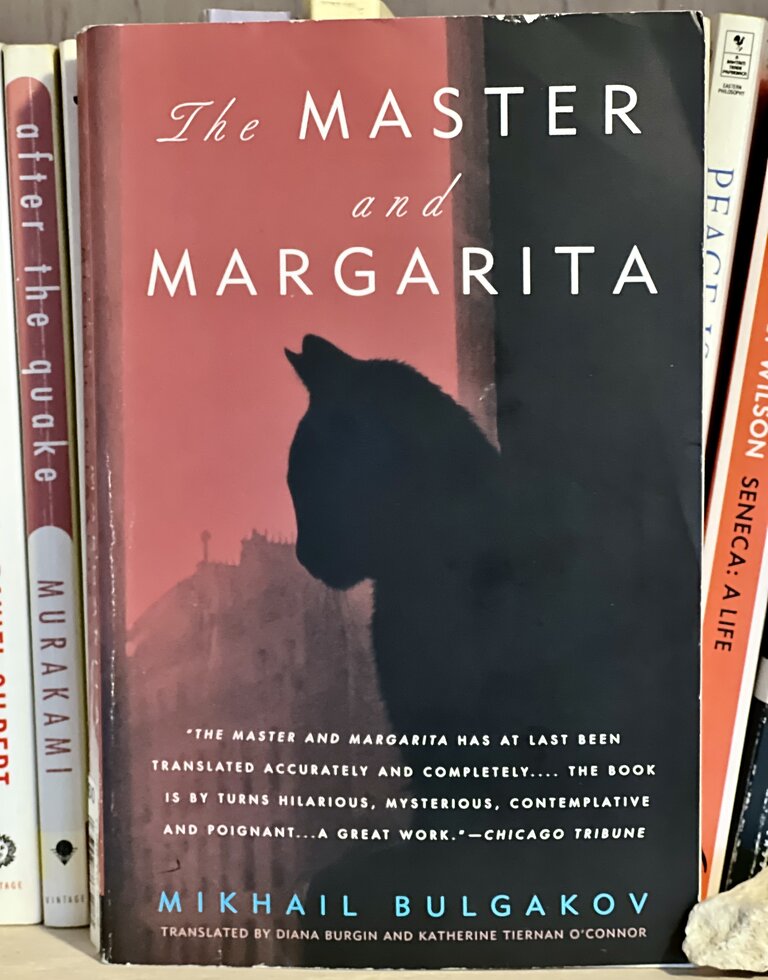
I’ve written before about how I consider recommendations. Pre-pandemic, I came across this list from baseball author Keith Law. He passionately recommended two books; Beloved by Tony Morrison and The Master and Margarita by Bulgogov.
I knew before cracking the cover Beloved was a heavy, emotional book, but was surprised at the supernatural/surrealist elements. Picked up M&M next, thinking it was a comedy (the recommendation highlighted the humor). Instead, it was a weird book set in Moscow in the 1930s, full of difficult Russian names and strange characters. I put it down after one hundred pages. A surrealist Russian historical novel wasn’t what I was wanted.
Since then, I’ve become a fan of Russian literature, thanks wholly to A Swim in the Pond in the Rain and the accompanying Story Club. I read Anna Karenina and a handful of the short stories in Nabokov on my own, and wanted more. Before buying new Russian books, though, I wanted to revisit M&M.
Attitude matters while approaching a book. I cracked into The Master and Margarita, knowing Bulgogov set it in old Moscow and surrealist. The humor would come from absurdity, not snappy dialogue or ironic thoughts of the narrator. And Anna Karenina cured me of any phobia I had about Russian names.
My favorite part of reading M&M is the prose. Something about the Russians and how they work with the language and tell a story. Bulgakov used more exposition than a modern story allows, but it’s done artfully. I’m never taken out of the story. My attention calmly flows from sentence to sentence. Reading is inviting and steady. But this made me wonder; who am I admiring? The author or the translator?
I’d never given much thought to the translator. We covered the topic in the GS class, and now I research the best translations. Anna Karenina had a team of highly respected translators, Richard Pevear and Larissa Volokhonsky. Surely, the plot, characters and overall direction are the original authors. But I consider myself as much a fan of Pevear and Volokhonsky as Tolstoy and Bulgakov.
Whenever I finish literature, I read essays and articles examining the story. Most of the critique and praise of M&M refers to its absurdity. Satan’s Ball was the most absurd part of the book and my least favorite. I kept waiting for these sections to end. I enjoyed the reactions of normal people to the absurdity, though. And of course very much liked Behemoth, often referred to as the large black cat.
If this were a Hollywood movie, it’d be an ensemble cast. Woland, otherwise known as Satan, is a constant throughout the book, but as a sometimes-absent protagonist. His dialogue and action are fairly limited. For the first third of the book, the reader assumes it’s about a play and its effect on a newspaper and theater. By the end of the book, we’ve spent significant time with a character we barely meet in the first half, namely the Master. And Bulgogov only referred Margarita to in the first half of the book. Much like an ensemble movie, we learn how all of our characters faired in the last few pages.
I loved The Master and Margarita. The prose, the characters, even Moscow, called to me. And, a day after finishing, I ordered another Tolstoy, a collection of Chekhov stories and Nabokov’s Lolita. With Pevear and Volokhonsky as translators, of course.
